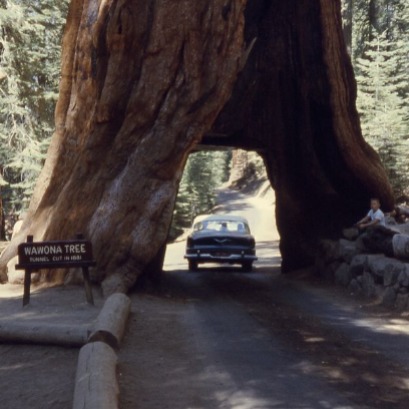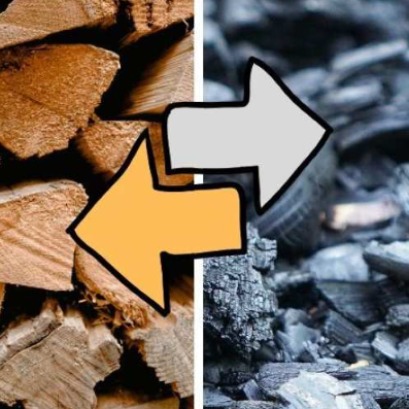
Wawona tree: the tourist attraction of the United States that disappeared in 1969
It was created in 1881 and became a very popular place during the following decades. However, when the tree fell at the close of the 1960s, everything changed. Wawona tree was the name that had a tourist attraction from the United States, which remained standing from 1881 to 1969 in Mariposa Grove, Yosemite National Park, California.
For decades, thousands of people approached the site with the intention of crossing the base of the famous tree. At first, the activity was on foot. Then, it was with cars. And finally, with cars, but everything changed 56 years ago, when the Wawona tree fell and the tunnel disappeared. How was the tunnel of the Wawona tree created? Through studies it was shown that the Wawona tree, which is described as a giant secuoya, was about 2,300 years at the time of its fall. That is why when the tunnel was created, in 1881, it was already a very old specimen. In that decade of the nineteenth century, a fire advanced on the tree. And, although it could be fought, much of its base was weakened. That is why it was planned to eliminate the affected sector, to build a tunnel and raise the tourist potential of the place. So, the Wawona tree gained popularity over time. But his great leap to fame happened after the foundation of the National Parks Service, in 1916, which coincided with the appearance of cars in California as a means of usual transport. Nearby. Why did the Wawona tree fall? 144 years ago, when the Wawona tree tunnel was created, this specimen has already experienced a slight inclination. And, although he kept standing in these conditions for almost a century, he fell during a day in February 1969. Among the reasons for his fall, in addition to the aforementioned factor, the existence of a large amount of snow was also added in his glass, product of an intense snow In the place currently? After the collapse of 1969, the United States authorities decided to leave the remains in the same place where they fell. It happens that these giant trees, over time, become homes for insects and small animals, as well as the basis for new plants. And, although it was thought that the site would not receive more visits, the opposite happened. Today, many tourists approach the huge base of the tree to take photos. That is why, currently, it is known as a fallen tunnel tree.
IT MAY INTEREST YOU
 Missions | New illegal felling in the Piņalito Provincial Park in San Pedro reveals the silent expansion of deforestation in protected areas
Missions | New illegal felling in the Piņalito Provincial Park in San Pedro reveals the silent expansion of deforestation in protected areas
The advance of deforestation on protected areas was once again evident this week in the Piņalito Sur Provincial Park, in San Pedro, where the Ministry of Ecology and Renewable Natural Resources confirmed a new case of selective illegal logging. The event occurs in a context of growing concern about the fragility of the environmental control system in rural and border areas, where the scarcity of resources, personnel and logistics limits the capacity of surveillance against criminal organizations organized to steal native woods and market them on the black market in connivance with sawmill owners.
 They promote research in pine resins from the NEA
They promote research in pine resins from the NEA
The forestry industry is one of the most important sectors in the economies of Misiones and Corrientes. Thousands of hectares of pine supply the paper, pulp, boards and sawmill industry. Pinus elliottii, one of the species established in the region, in addition to providing wood, is used to produce resin, a non-wood forest product with high demand in the chemical, pharmaceutical and cosmetic industries. In 2\024, resin extraction of approximately 52,6\0\0 tons was achieved from approximately 18,\0\0\0,\0\0\0 trees in production, generating income and jobs with high expansion potential.
 Canadian researchers make biochar from wood waste that rivals steel in strength
Canadian researchers make biochar from wood waste that rivals steel in strength
Researchers at the University of Toronto have developed monolithic biochar from wood that can reach an axial hardness of up to 2.25 GPa, similar to mild steel.





















